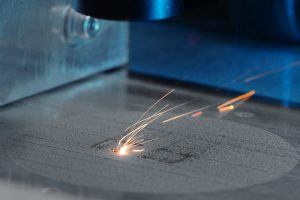How To Make A Metal Vase

If you are sick of the same old furniture and household decoration, you might take on the task of making your own vase. This will allow you to incorporate something personal and unique into your home. Alternatively, you might craft a gift for someone else. But how would you go about embarking on such a project?
#1. Look for Inspiration
Your inspiration can come in multiple forms, from pictures to antique vases. Once you obtain your inspiration, you should sketch out a 3D design of what you intend for the vase to look like. If you are happy with this, you should then draw out all the faces on paper to act as a template for when it comes to cutting your metal.
#2. Select Your Metal
Next, you will have to select which metal you wish to use for your project. The cheapest metal to work with would be steel and it is also easy to weld. Therefore, steel might be the best option for first-time projects.
#3. Mark Out Your Metal
Once you have selected your metal, you should use the paper templates to trace out the shapes onto your metal sheet. Chalk or soapstone will be the most effective way to mark out the shapes you need.
#4. Cut Your Metal
As we move on to the actual fashioning of the material, you may be wondering how to cut metal. In order to cut sheet metal, you will need to use one of the following: snips, a jigsaw, or a band saw. Regardless of which cutting tool you select, you will need to clamp down your sheet metal and ensure clearance for the blades. But how should you go about selecting the right tool?
Snips offer precision when cutting soft metals such as brass, thin gauge steel, aluminium, and tin. Quite simply, you use snips in the same way that you would scissors, cutting or curved or straight lines. Snips are cheap and accessible but will wear down quickly; if you find yourself cutting a lot of sheet metal you might invest in a more robust tool.
A jigsaw can both quickly and precisely cut sheet metal. Furthermore, you can change the blade on a jigsaw to cut a variety of materials.
For thick sheets of metal, a band saw would be the most appropriate cutting choice. However, a band saw should not be used on metals that are thinner than the depth of three teeth on the band saw. This tool is a more specialized piece of equipment and will require sufficient space.
#5. Start Bending, Welding, and Grinding
After cutting your metal, you will need to start fashioning it into your desired shape. Ensure that you are wearing gloves and have access to a vice, pliers, and a hammer. You should gradually bend each fold, one at a time, until the sides are close enough for tacking. Once the joints are tight enough, you will need to weld them together until all sides are welded and tacked. Once your vase is all welded, you will need to neaten it up through a lot of grinding, and you might trim any rims or edges. This is your completed vase.
Conclusion
This is just one method of fashioning a vase but bear in mind that the possibilities are endless when it comes to undertaking a project like this. Additionally, you might not be thrilled with the final outcome of your first attempt but remember that practice makes perfect. Similarly, a homemade project should not be perfectly refined as this takes away from its unique nature. Now you can wow your friends with your own metal creations.






